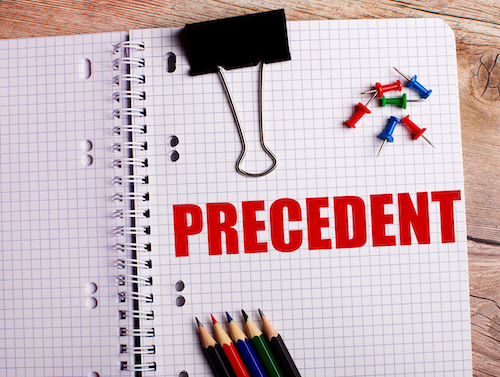CAFC Clarifies Determination of ‘Implicit’ Claim Constructions
“In rejecting the Board’s analysis, the CAFC said that ‘it is helpful to look to the outcome of the tribunal’s analysis’ in order to determine whether claim construction has taken place.”
The U.S. Court of Appeals for the Federal Circuit (CAFC) today issued a precedential decision vacating and remanding a Patent Trial and Appeal Board (PTAB) decision that a patent for a climate control system was not proven unpatentable by Google LLC and Ecobee, Inc. In so doing, the court clarified how to determine when a court or the PTAB has implicitly construed a claim.
The patent at issue is U.S. Patent No. 8,498,753. The PTAB explicitly stated that it did not need to engage in express claim construction and that it did not construe any of the claim limitations. However, it later concluded in reaching its decision that the limitation in question “‘recites five distinct inputs upon which the time is based at least in part’ and thus it ‘requires that each of those inputs be a distinct component of the calculation of the ‘first time prior to said target time.’” It further determined that “[t]here is nothing in the asserted claims to suggest that one piece of data can be used to satisfy multiple inputs” and therefore rejected Google’s theory of unpatentability, which did “‘not use each of the five distinct inputs,’ but rather double counted an input such that it uses ‘one or more thermal performance values of said structure’ to satisfy both inputs [i] and [iii].”
In rejecting the Board’s analysis, the CAFC first said that “it is helpful to look to the outcome of the tribunal’s analysis” in order to determine whether claim construction has taken place. The Board’s statement that it was not engaging in claim construction is not dispositive as to whether claim construction occurred, said the court, and it agreed with Google’s argument on appeal that the Board’s assessment of the limitation in question amounted to claim construction. “There is nothing on the face of the claim to discern the scope and boundaries of [the] inputs, e.g., whether one input may be calculated based on another input, and whether they must be distinct or may be entwined,” wrote the CAFC. “To determine, as the Board did, that no input can be based in part on another input and that each input must be distinct, is to establish a limit to the scope of the [1m] claim limitation.”
Additionally, the cases relied upon by the Board in its decision related to interpreting claims in the claim construction context and the Board’s reliance on those cases was to determine the meaning and scope of claims, which is a claim construction inquiry, said the court.
Turning to whether the PTAB’s construction was then erroneous, the CAFC found that it was, though it rejected Google’’s argument that it violated the Administrative Procedures Act (APA). The court found that Google had ample notice of the core issue posed by the Board’s construction, namely, “the scope and boundaries of the five inputs,” because the parties had raised them throughout the inter partes review (IPR) proceeding.
In finding the construction erroneous, the CAFC said that the specification supports a broader construction of the relevant limitation and “contains no restrictive language and does not explicitly require that the claim inputs be separate.” The court ultimately agreed with Google’s proposed construction and reversed the PTAB’s implicit construction, vacating the Final Written Decision and remanding for additional proceedings under the correct construction.
Image Source: Deposit Photos
Author: len_dig@mail.ru
Image ID: 417844404
Eileen McDermott
Eileen McDermott is the Editor-in-Chief of IPWatchdog.com. Eileen is a veteran IP and legal journalist, and no stranger to the intellectual property world, having held editorial and managerial positions at […see more]







